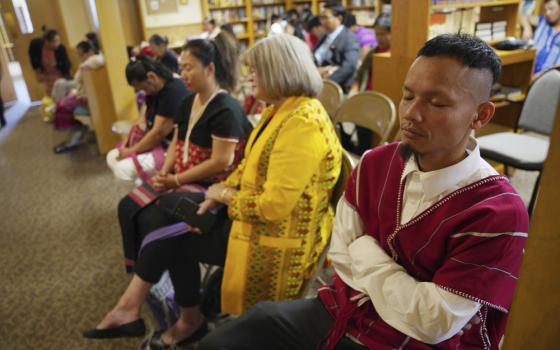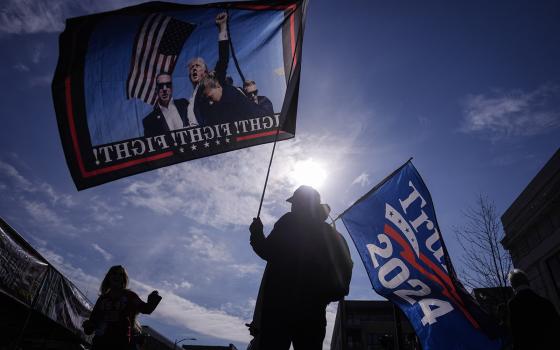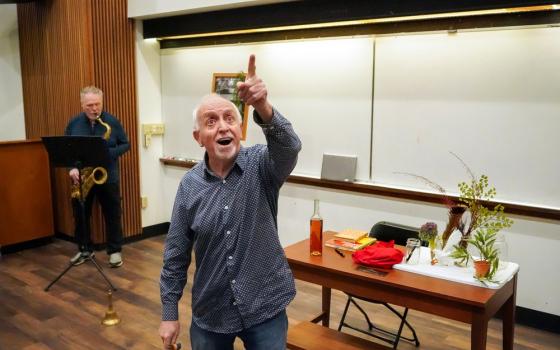On this day, 120 years ago, the massacre at Wounded Knee took place.
"In the morning, to facilitate the disarming of the Indians, [Colonel James W.] Forsyth ordered that the Indian men be assembled on a council ground between the Indian camp on the south and the military camp to the north. Dismounted cavalry troopers surrounded the Indians on all sides, and mounted cavalry encircled the outer perimeter, which also included the Indian camp where the women and children remained. Following standard military field practice, a battery of four Hotchkiss guns were placed on a vantage point, Cemetery Hill, 200 yards to the west. Forsyth's command totaled about 500 soldiers armed with single-shot Remington rifles; some had Colt pistols as well."
--from At Standing Rock and Wounded Knee: The Journals and Papers of Father Francis M. Craft, 1888-1890, edited by Thomas W. Foley.
"According to differing accounts, at least 106 of the 120 Indian men were gathered in the center of this scene; perhaps 230-250 of the women and children watched the proceedings from the Indian encampment.
"What happened next has been a subject of debate and controversy for much of the past century, leading to a current-day scholarly consensus that establishes Wounded Knee as a senseless massacre--a slaughter of unarmed Indian men, women, and children by drunken and vengeful white troops of the Seventh Cavalry. Today's consensus generally agrees that the troops and officers were still drunk, or at least hung over, from celebrating the capture of Big Foot and his band the night before."
Fr. Francis M. Craft, who was stabbed in the back during the battle but recovered and lived another thirty years, offered a different viewpoint "in a deposition submitted to the federal commission charged with investigating the tragic event": "There has been an effort to charge the soldiers with cruelty & slaughter, but it is a vile slander. They worked hard to stop the fight, & to save lives. After the battle, some of them had little Indian babies wrapped in their coats, carrying them off the field."
Who was the priest who was sympathetic to the Sioux and to the soldiers?
Francis M. Craft was born in New York City in 1852 to Isaac Craft, a surgeon at Bellevue Hospital, and his wife Sarah Phillips, "who was descended from Revolutionary War hero Nathanael Greene. From this lineage, Francis acquired the Sons of the Revolution Medal that he proudly wore on his chest at Wounded Knee."
After Wounded Knee, Fr. Craft wrote, "The insignia of the Sons of the Revolution got a thorough 'baptism of fire.' The ribbon was darkened by powder smoke, & the balls that cut the buttons from my cassock nearly touched it, but it 'staid with me' all right."
Wounded Knee was not Francis Craft's first battle. At the age of ten, with the permission of his father and Governor DeWitt Clinton, he joined the Union Army and "reached Gettysburg in time for the epic battle of the Civil War". He was to be a messenger boy, but he "was knocked unconscious by a bayonet blow to the head on the first day of the battle".
At twelve, he started medical school at Columbia. From there, he went to the University of Louvain for advanced study in surgery. In July, 1870, the eighteen-year-old became a mercenary in the Franco-Prussian War and "served with the Marquis de Gallifet's 'mixed squadron' in the final, desperate charge of the conflict that brought an end to the Second Empire in France".
Back home, Francis joined his father's medical practice, now in Pennsylvania, but he was still looking for adventure. He "recruited 250 Civil War veterans (from both sides)--'all Irishmen but four'--and sailed with them from Tampa, Florida, to Cuba, where they fought a guerrilla action as mercenaries for the Cuban flag."
Back home again, Francis became a Catholic, and in 1876, he entered the Society of Jesus. After his novitiate, and after additional studies in philosophy at Louvain, he was sent to Woodstock College. There he met Bishop Martin Marty, OSB, who was recruiting priests for the Dakota Territory. Francis Craft left the Society of Jesus and was ordained by Bishop Marty in 1883.
"Father Francis M. Craft was a complex, controversial figure on the Dakota reservations as the western frontier came to a close. In almost two decades in the Dakotas, he fought federal bureaucrats and church hierarchy alike as he strove to improve the wretched conditions that beset the Sioux. In the process, he earned the deep respect and admiration of the Indians and the enmity of Indian agents and his own Catholic hierarchy."
In the years after Wounded Knee, Craft founded a sisterhood for Indian women. The difficulties over this came from many directions, and Craft lost his clerical faculties for a time. With four of the sisters, he went to Cuba during the Spanish-American War. "All the sisters served admirably and were awarded the silver crosses of the Order of Spanish-American War Nurses." After returning to the United States, the sisterhood disbanded, and Craft, his faculties restored, was appointed pastor of St. Matthew's Church in East Stroudsburg, Pennsylvania. He served the parish for nearly twenty years until his death in 1920.
Besides editing Fr. Craft's journals and papers, Thomas Foley has written his biography, Father Francis M. Craft, Missionary to the Sioux.



